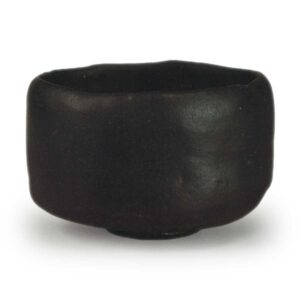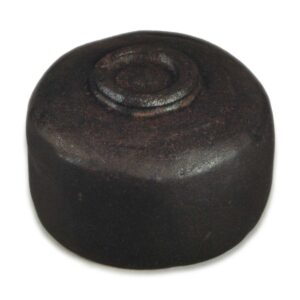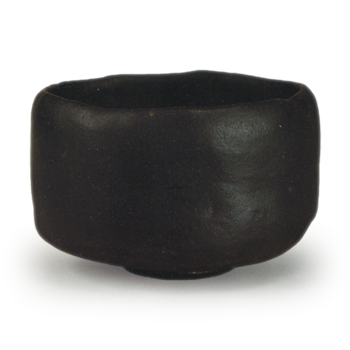

Height: 7.6 to 8.0 cm
Diameter: 10.8 cm
Outside diameter of foot: 5.0 cm
Height of foot: 0.7 cm
According to the book “Choki-mei Shunkanki” that accompanied the tea bowl, the inscription “Shunkanki” means “In the middle of the Tensho era, a tea master named Shunkanki was living in Edo and was famous for his tea appreciation. One day, he asked the potter Hina no Jōji (Chōjirō) to make three tea bowls for him, and when they were already finished, he asked the potter to choose one of them as a gift for him. picked out one of them and returned the others, and then asked the old man to write an inscription for the sake of his appreciation. The inscription was written in the two characters “Shunkan” by the old man, and it is said that this was the one that was given to him. It is said that the one that is recorded in the Heishi, where Kan apologizes to Niu and his voice is transmitted to the Haishi, is a thousand-year-old wonder. Looking at it now, this is the thing, and so I will write about it, and so it is,” and the origin of the piece is recorded in both Japanese and Chinese.
The style of the pieces is consistent, with the same ‘kanadori’, ‘ichimonjikuro’ and ‘niji’ motifs, and all have a protruding waist, with the mouth turned inwards and a narrowing in the middle. Furthermore, the interior is spacious, and the shallow tea-drip well in the center is the same.
Although the “Karitori” has not been measured, the “Shunkan” and “Ichimonjikuro” are both thinly made, and like the “Daikoku” and “Muichimono”, they are characterized by not being thick at the bottom.
The foot ring is quite small in comparison to the diameter of the bowl, and it is also carved low. The foot ring is slightly raised at the edge, and the strongly stretched waist is chamfered at two places, which is a feature not seen in other Chojiro tea bowls.
The body is plump, but there is a slight horizontal constriction in some places, and there are also some vertical, loose ridges.
The rim is thick in places and thin in others, and it is also uneven in height.
The inside of the bowl is constricted at the body, and the inside is wide and flat in the center, with a shallow tea pool, but the overall impression is of a flat bottom.
The foot ring is small and low, and the area around the foot ring is slightly sunken. The inner foot ring is shaped like a swastika, but it is not as clear as the Daikoku (god of wealth) design. There are three clear traces of tatami-maki (tatami mat-shaped) marks.
The black Raku glaze that covers the entire piece is smooth and well-dissolved, but it is not as glossy as the non-glazed black, and the overall color tone is matte and subdued, with the characteristic amber-tinged glaze of Chojiro’s black well-dissolved. There is one repair on the rim, and another running vertically down the body.
On the inside of the lid, the calligraphy of the two characters “Shunkan” on the center of the lid is by the hand of Rikyu, and the calligraphy of “Chojiro Kuro Chawan” on the upper right is by the hand of Sen Sōtan. On the inside of the lid of the inner box, there is a poem by Senso in the handwriting of Sen no Rikyu, which reads “Rikyu has two tools: one for grinding, one for polishing. The other is a tea bowl, which Rikyu wrote, and the tea bowl is by Chojiro, which Sotan wrote. Soshitsu (signature)”. Senso’s poem is probably a poem about the tea bowl that was sent back from Satsuma.
There is also a letter of determination by Kakuzai Hara So and a general box, and the letter of determination on the general box is by Noshinsai. The text of the letter from Hara So reads, “Chojiro black tea bowl, inscribed with the name of Rikyu Toshikane, passed down in the Soshitsu family, a priceless treasure, may be kept as a treasured family heirloom, with the utmost respect, Kanso Hara (signature), January 22nd”.
Although there are so many writings and inscriptions from the Senke family, the history of the box is unknown, and the date when it became the property of the Muromachi Mitsui family is also unclear.



